Palaeozoic
Type of resources
Available actions
Topics
Keywords
Contact for the resource
Provided by
Years
Formats
Representation types
Update frequencies
Scale
-

4 volumes of the donations by Kidston of onshore British (predominantly Palaeozoic) plants. Geological and geographical information, notes and photos are present. Kidston's own numbering system was maintained: 1-7319. Reference is also made to the publication in which specimens were illustrated.
-

This dataset contains geochemical measurements which quantify the major and trace element concentrations of Precambrian (Proterozoic) and Paleozoic (541–251 Mya) mudstones. Sampled mudstones are listed under their formation name, with information on the locations of each outcrop belt and further details on lithological characteristics, including environment of formation, freely available on the British Geological Survey Lexicon of named rock units (https://www.bgs.ac.uk/technologies/the-bgs-lexicon-of-named-rock-units/) and Government of Canada weblex (https://weblex.canada.ca/weblexnet4/weblex_e.aspx), for UK and Canadian samples, respectively. Stratigraphic age is given in accordance to the GSA geological timescale v.5.0. Following sampling, specific methodologies for preparation for major and trace element analysis, conducted on an Agilent 5100, are provided in the Methodology. The data was collected to understand changes in weathering intensity coeval with the Paleozoic expansion of land plants. The major element data was needed to: 1) determine how much sample was required for subsequent Lithium isotope analyses (data from which are separately uploaded to the repository); and 2) to ensure similarity of source between samples compared across our study. The tabulated major element analyses were compared at different temporal stages of plant evolution through the Paleozoic. Samples were collected by the University of Cambridge. Major element data was obtained by William McMahon, and supervised by Edward Tipper and Mohd Tarique and Emily Stevenson.
-
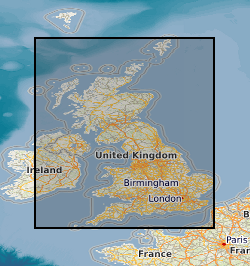
The register lists Lower Palaeozoic microfaunas (including "small shelly" faunas), but occasionally mentions small trilobites and various fragments. SAQ1-259 are used, although several numbers have no details assigned to them. Sample number, sheet number, NGR, fossil identification, borehole names & depths are given.
-
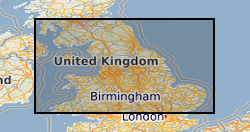
This is a simple Oracle table holding sample numbers, locations (UK National Grid) and illite crystallinity values measured for pelitic (mudrock) samples from Lower Palaeozoic terranes in the UK. Though intended for use by a BGS collaborative project with Birkbeck College, London, data may be made available to others on request.
-
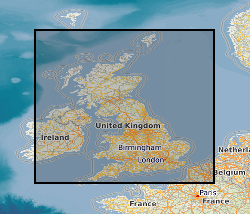
Register of microfossil analyses carried out in the Leeds and London Office during the 1970s and 1980s held in book form and in box files. They are arranged as follows: SAA 1-4409 Calcareous Microfossils onshore; SAB1-3229 Calcareous Microfossils (London) Jurassic onshore; SAC1-3247 Calcareous microfossils (Leeds) Jurassic and Cretaceous onshore; SAD1-1593 Palaeozoic microfossils onshore; SAG 1-2062 Chalk foraminifera onshore; SAY1-1888 Calcareous microfossils offshore; SAZ1-2261 Calcareous microfossils from Continental Shelf (South).
-
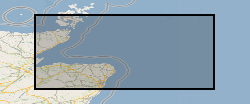
Reports, images, GIS and gridded products describing the Palaeozoic geology and conventional petroleum systems of parts of the UK offshore from the Orcadian Basin, Moray Firth to northern Forth Approaches (Quadrants 6-21). Devonian and Carboniferous rocks are the focus. The peer-reviewed products were produced for the 21CXRM Palaeozoic Project by BGS for DECC/OGA, Oil and Gas UK and oil company sponsors between November 2014 and May 2016, to improve regional digital datasets and knowledge of the underexplored Palaeozoic petroleum systems, and to stimulate exploration. The petroleum systems analysis was based on new interpretations of extensive well, seismic, gravity-magnetic and source rock datasets, integrated with petrophysical studies, basin modelling and UK onshore knowledge. Released data were collated and interpreted, and interpretations of unreleased data were included with agreement of the data owners. Unreleased raw data is excluded, as is the UK Government Seismic data released in 2016. The datasets are applicable for use at scales between 1:750,000 to 1: 3,000,000
-
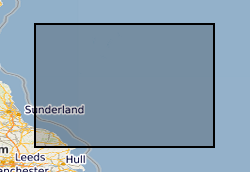
Reports, images, GIS and gridded products describing the Palaeozoic geology and conventional petroleum in and around the Mid North Sea High (Quadrants 25-44). Covering a large area of the Central North Sea from the Forth Approaches to the northern side of the Southern North Sea, the focus is on Devonian and Carboniferous rocks. The peer-reviewed products were produced for the 21CXRM Palaeozoic Project by BGS for DECC/OGA, Oil and Gas UK and oil company sponsors between November 2014 and May 2016, to improve regional digital datasets and knowledge of the underexplored Palaeozoic petroleum systems, and to stimulate exploration. The petroleum systems analysis was based on new interpretations of extensive well, seismic, gravity-magnetic and source rock datasets, integrated with petrophysical studies, basin modelling and UK onshore knowledge. Released data were collated and interpreted, and interpretations of unreleased data were included with agreement of the data owners. Unreleased raw data is excluded, as is the UK Government Seismic data released in 2016. The datasets are applicable for use at scales between 1:750,000 to 1: 3,000,000.
-
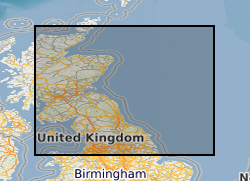
GIS versions of a regional structural summary and palaeogeographic reconstructions describing the Palaeozoic geology of parts of the UK offshore and onshore, plus a set of summary posters and a summary presentation capturing the conventional petroleum systems. Devonian and Carboniferous rocks are the focus in and around the Mid North Sea High, Central North Sea, the Moray Firth and Orcadian Basin. In the greater Irish Sea area, Carboniferous rocks are described. The peer-reviewed products were produced for the 21CXRM Palaeozoic Project by BGS for DECC/OGA, Oil and Gas UK and oil company sponsors between November 2014 and May 2016, to improve regional digital datasets and knowledge of the underexplored Palaeozoic petroleum systems, and to stimulate exploration. The petroleum systems analysis was based on new interpretations of extensive well, seismic, gravity-magnetic and source rock datasets, integrated with petrophysical studies, basin modelling and UK onshore knowledge. Released data were collated and interpreted, and interpretations of unreleased data were included with agreement of the data owners. Unreleased raw data is excluded, as is the UK Government Seismic data released in 2016. The GIS layers were digitised from figures prepared for project reports and are applicable for use at scales between 1:1,000,000 and 1:3,000,000.
-
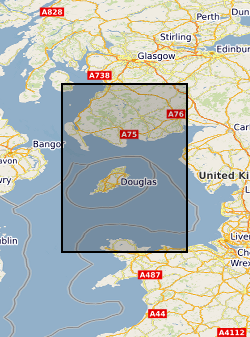
Reports, images, GIS and gridded products describing the Palaeozoic geology and conventional petroleum systems of parts of the UK offshore from the greater Irish Sea area. Carboniferous rocks were the focus in areas from the Firth of Clyde, Solway Basin, Manx-Peel Basin to the East Irish Sea Basin and surrounding areas (Quadrants 110-126). The peer-reviewed products were produced for the 21CXRM Palaeozoic Project by BGS for DECC/OGA, Oil and Gas UK and oil company sponsors between November 2014 and May 2016, to improve regional digital datasets and knowledge of the underexplored Palaeozoic petroleum systems, and to stimulate exploration. The petroleum systems analysis was based on new interpretations of well, seismic, gravity-magnetic and source rock datasets, integrated with petrophysical studies, basin modelling and UK onshore knowledge. Released data were collated and interpreted, and interpretations of unreleased data were included with agreement of the data owners. Unreleased raw data is excluded. The datasets are applicable for use at scales between 1: 750,000 to 1: 3,000,000.
-
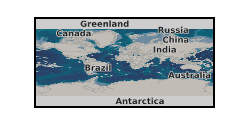
The BGS Stratigraphical Masterpack Series aims to provide high quality biostratigraphical information modules for industry. It is envisaged that the majority of clients will be among the exploration, extraction, construction and consultancy sectors. The topics of these packages are designed, as far as possible,to be relevant to industrial needs by, for example, focusing on a particular frontier exploration area or documenting a fossil group of major interest. They act as practical desk-top guides for routine reference work and are also the basis for in-house staff training. The latest Masterpacks are PC based. There are four titles currently available for purchase from BGS: 1.Reference Collection of British Jurassic Dinoflagellates 2.Jurassic Dinoflagellate Cysts from Skye, NW Scotland 3.Stratigraphic Masterpack on Carboniferous Palynostratigraphy - The Arctic to North Africa 4.Palaeozoic Palynostratigraphy of North Africa, The Middle East & Gulf Region: An Integrated Database
 NERC Data Catalogue Service
NERC Data Catalogue Service